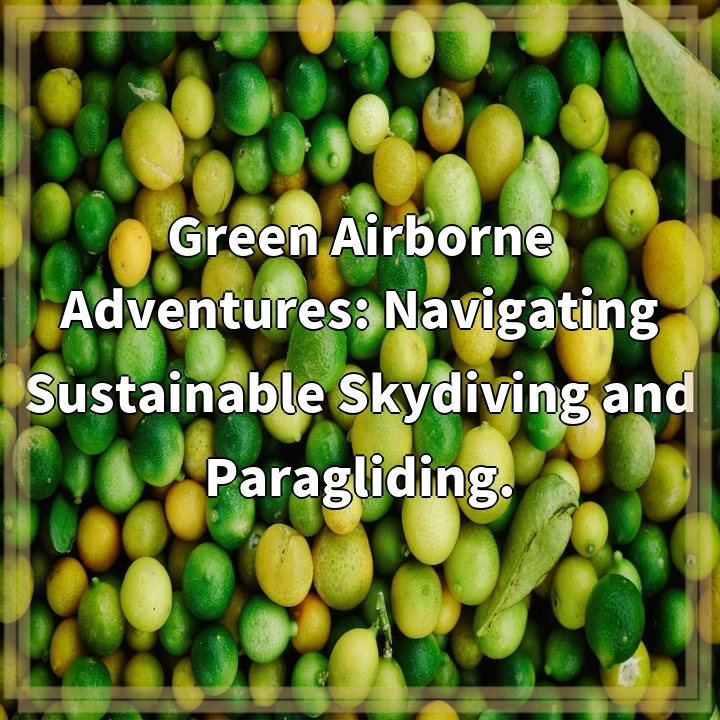
What it is:
Buckle up and get ready for an adrenaline-pumping adventure as we delve into the world of sustainable skydiving and paragliding. These thrill-seeking activities are a unique way to experience the beauty of the sky and the freedom of flight. But what sets sustainable skydiving and paragliding apart from their conventional counterparts?
Sustainable skydiving and paragliding involve incorporating environmentally friendly practices in every aspect of these activities. This includes reducing carbon emissions, minimizing waste, preserving natural habitats, and supporting local communities.
Real-World Problems:
While skydiving and paragliding may seem like harmless sports, they do have their environmental drawbacks. Traditional skydiving operations consume a significant amount of fuel for aircraft, contributing to greenhouse gas emissions. The infrastructure required for the sport, such as drop zones and aviation facilities, can also have negative impacts on local ecosystems.
Additionally, the disposal of parachutes and gliders at the end of their life cycle can generate waste that is not easily recyclable or biodegradable. This presents a challenge in finding sustainable solutions to manage and repurpose these materials.
Moreover, the popularity of skydiving and paragliding has led to increased tourism in certain areas, putting strain on local communities and natural resources. Ensuring sustainable practices is crucial to minimize the negative impacts on these regions and maintain a harmonious balance between adventure sports and the environment.

Solutions to Real-World Problems:
1. Embracing Sustainable Practices:
By adopting sustainable practices, the skydiving and paragliding industry can significantly reduce its environmental impact. This includes investing in fuel-efficient aircraft, using renewable energy sources, and implementing eco-friendly technologies throughout the entire operation.
2. Implementing Waste Management Strategies:
To address the issue of waste generated by parachutes and gliders, it is crucial to develop effective waste management strategies. This could involve promoting the reuse and recycling of materials, exploring biodegradable alternatives, and collaborating with recycling facilities to find innovative solutions.
3. Engaging in Conservation Efforts:
Preserving natural habitats is key to maintaining the balance between adventure sports and the environment. Skydiving and paragliding organizations can play a role in conservation efforts by supporting local wildlife sanctuaries, contributing to habitat restoration projects, and promoting sustainable tourism practices.
4. Educating and Raising Awareness:
Education plays a crucial role in encouraging participants and enthusiasts to make environmentally conscious choices. By providing information on sustainable practices, the industry can empower individuals to make more sustainable choices and spread awareness about the importance of preserving the environment.
5. Collaborating with Local Communities:
Building strong partnerships with local communities is essential for mitigating the impacts of increased tourism. This can involve supporting local businesses, contributing to community development initiatives, and engaging in open dialogues to address any concerns or conflicts that may arise.















